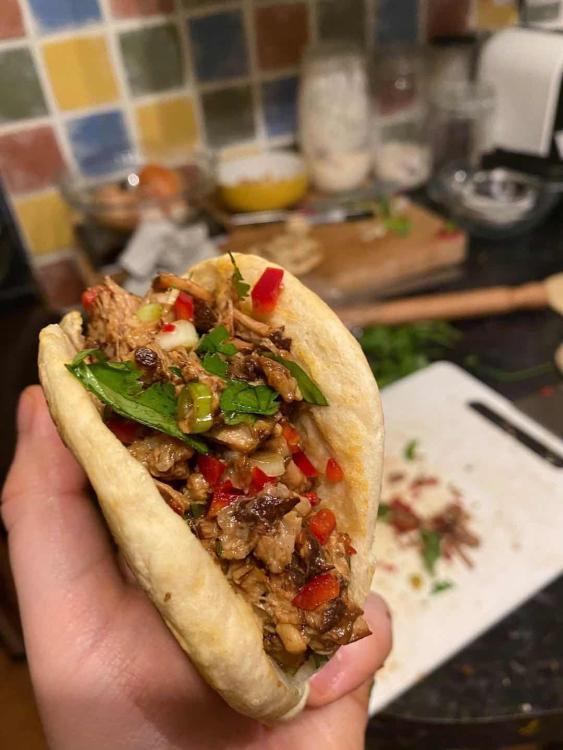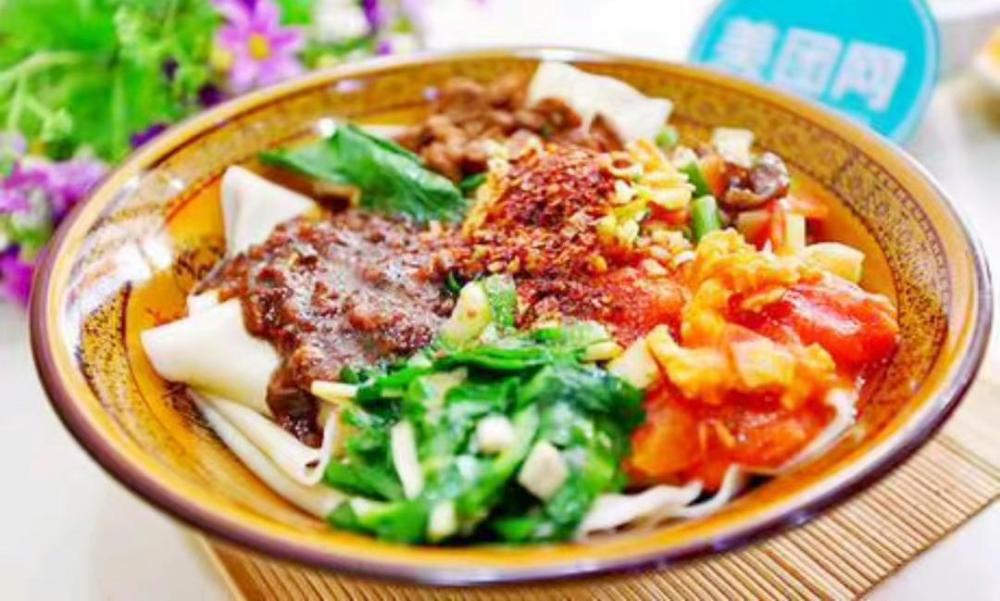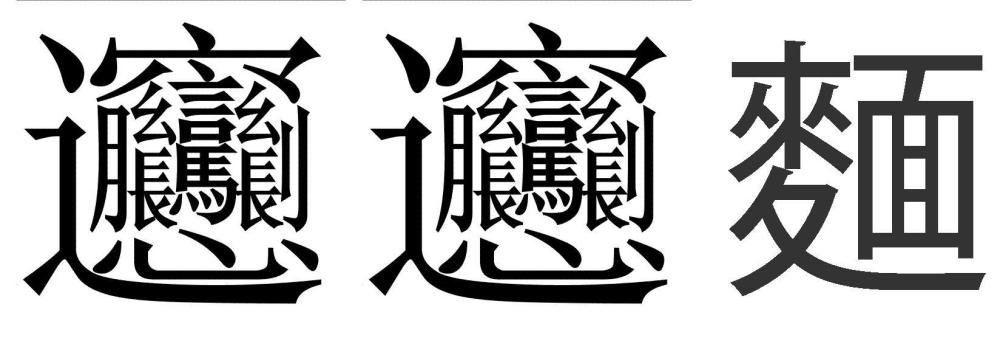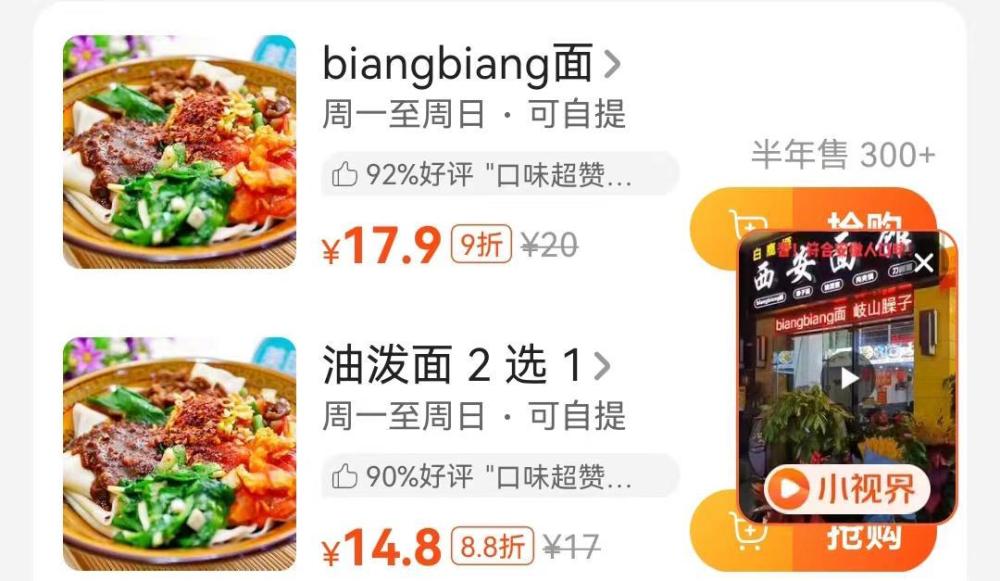秦菜 (qín cài) – Shaanxi (陕西) Cuisine
.jpg.32d49d60ae3e96ff135e0a4e8ffaa0ae.jpg)
Public Domain Image
I spent the first year of my time in China in Xi’an. When I arrived I was astonished to find that the food in no way resembled anything I’d ever eaten before, despite regularly eating ‘Chinese’ food in the UK and elsewhere in Europe. I was delighted and still firmly believe it is one of China’s best (a million times more interesting than Cantonese, usually (mythically) considered number one by so many people.) Yet, it isn't included in the 'eight cusines' list.
Shaanxi Province (not to be confused with 山西 (shān xī), the neighbouring province of Shanxi), is in north-central China and the capital 西安 (xī ān) Xi’an is home to the Terracotta Army. The city was formerly known as 长安 (cháng ān) and was China’s capital during 13 dynasties but starting with the 秦朝 (qín cháo), the Qin Dynasty (221-206 BCE). Founded by 秦始皇 (qín shǐ huáng), Qin Shihuang (259-210 BC), who became the first Chinese emperor on its founding. The Tang dynasty, 唐朝 (táng cháo) (618-907) city is still considered one of the most cultured for its innovation, literature and food. Emperor Qin ordered the building of The Great Wall of China and the Terracotta Warriors were created to guard his lavish tomb, just outside Xi’an. This lay for over 2000 until farmers digging a well in 1974, discovered what is now considered one of the greatest archaeological sites in the world.
Qin Shihuang - PD
Of course, today it is a major tourist city and this has led to the cuisine often being referred to simply as 西安菜 (xī ān cài) or 西安美食 (xī ān měi shí – Xi’an culinary delicacies) although not all of its most well-known dishes originated in the city but elsewhere in the province. Eating here has been described as like returning to ancient China. 吕氏春秋 (lǚ shì chūn qiū), “The Spring and Autumn [Annals] of Mr. Lü”, completed in 240 BC under the general direction of Lü Buwei, a minister in Emperor Qin’s court describes, among other things, the agricultural and culinary sophistication of the times in Shaanxi.
Shaanxi has had a large Muslim population since the 7th century AD and this has influenced the cuisine in many ways, especially in the use of mutton and beef rather than China’s usual pork. But it is also influenced by the cuisines of other parts of China and the outside world. Xi’an was the starting point of the famous Silk Road heading west as far as the Arab countries with which they traded, bringing back spices and other foods. Wheat is a major staple, as with most of northern China. Less rice is consumed here as that is a southern crop, although there are exceptions.
Shaanxi food is generally full of strong, heavy flavours. Vinegar is a common ingredient as are chillies, but fewer than Sichuan or Hunan. It is cold in winter, so people like higher calorific foods.
Despite those cold winters, almost a year-round staple in Shaanxi is 凉皮 (liáng pí). These are a type of noodles made from gluten starch extracted usually from wheat. They are served cold with vegetables. There are three main versions
1) With sesame paste
2) With cucumber
3) With chilli oil

Liangpi
They are often eaten alongside the next dish.
I have mentioned 肉夹馍 (ròu jiā mó) many times on these forums. These hamburger-like sandwiches also come in various versions. Most common are tose made with stewed pork and chilli and served in 白吉饼 (bái jí bǐng), a type of Shaanxi flatbread. However in Xi’an, because of the large Muslim population, they are often beef. My favourites are 孜然牛肉夹馍 (zī rán niú ròu jiá mó), cumin beef with chillies. Outside Xi’an, but still in Shaanxi, lamb or mutton is used. There is more over on this topic, including a recipe for my favourite type.
Pork Roujiamo
Cumin Beef Jia Mo
Then I come to a dish which only appeared recently (it was unknown when I lived there). Or was it? For centuries Xi’an people have been eating 油泼面 (yóu pō miàn), oil splashed noodles. These are wheat noodles which are boiled then finished with hot oil with chilli and scallions being poured over them, imbuing them with flavour. A simple, but popular dish.
Image from menu of local menu
A few years ago some vendor come up with a marketing trick to attract or fool the tourists. He took that same 油泼面 (yóu pō miàn), invented a new name and a new character and launched a re-branded version. The only change he made to the actual dish was using extremely long noodles – up to a metre or more in length, so difficult to eat. The version he came up with is Biang Biang Noodles, an onomatopoetic name supposedly derived from the sound made when the noodles are slapped against the counter on which they are made. The character he used is totally bogus, but he claimed it was the most difficult character to write as it has 57 or 58 strokes. It appears in no Chinese dictionaries and cannot be typed on any computer (Unicode seems to be wisely ignoring it). Menus write it ‘biang biang 面’. Here is the best I can do using Photoshop.
Biang Biang Mian
The thing that amuses me is that some restaurants offer the same dish under the two names, but for different prices, the biang version being more expensive – of course.
Another common dish is the strangely named 臊子面 (sào zi miàn), minced pork noodles. In the local dialect, 臊子 means ’chopped meat‘, but in Mandarin, 臊 means ‘bad smelling’! The dish doesn’t smell in any way other than appetising. This noodle dish was recorded as being invented in the Han dynasty (202 BCE – 220 CE) in Qishan county in Shaanxi and consists of minced pork, day lily, fungi, vinegar, tofu, egg, chilli and carrot and is sour and salty. The chilli is very mild but gives colour.
Saozi Noodles
There are, of course many other dishes but these, I remember are the most popular.













